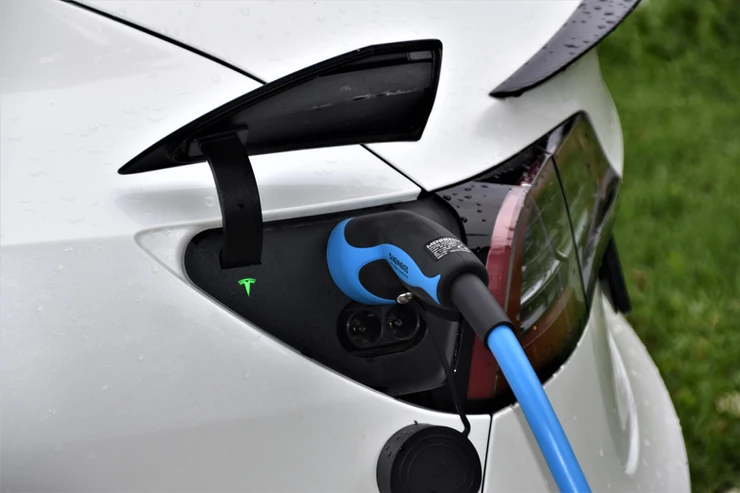
If we want to avoid a climate catastrophe, society has to make many changes and the green revolution must keep on going. One of the changes needed is in the automotive industry: the aim is to electrify as many vehicles as possible on the road in the least amount of time. What the future of mobility will look like is constantly changing as EVs continue to rise in popularity.
In 2019, overall total passenger automobile sales declined whilst EV sales continued to grow and gain market share. Additionally, the EV market mix continued shifting toward pure-battery EVs which grew to 1.6 million, a 17% increase, and accounting for 74% of all EVs. As such, the European EV market alone grew by 46% to 564,000 in 2019.
Accelerating the mainstream adoption of EVs has challenges such as cost, range and the current variety of technologies however the opportunities heavily outweigh them with the likes of infrastructure, funds, batteries and interoperability.
Industry Challenges
Like any industry change, it takes time, with certain factors holding the revolution back.
Cost
With the cost of EVs being expensive to produce, retail prices are also on the more expensive side. However, as more and more EVs are produced, these costs are slowly starting to go down, also impacting retail prices. A study led by Castrol in 2020 found that 63% of consumers think EVs are currently beyond their budget. Indeed, EVs can cost up to over 40% more than a similar internal combustion engine model.
Fortunately, as demand continues to grow, the cost of batteries is falling. Indeed, according to BloombergNEF, the price of a lithium-ion battery pack fell by 89% from more than $1,100/kWh in 2010 to $137/kWh in 2020. By 2024, it is estimated that average prices will be below $100/kWh whilst by 2030, the average price is forecasted to be around $62. Therefore over the next few years, the cost to produce and retail price of EVs should go down, mirroring the demand of batteries.

Waldemar Brandt, Unsplash
Range and charging
One of the barriers to EV adoption is range and charging anxiety, the fear that drivers will run out of power and be stranded on the road, or that they will be stuck at a charging station for hours while they recharge their vehicle.
With the average range of an EV on a full charge being 290km (181 miles), confidently driving long distances without being stranded can be challenging and needs to be carefully planned. At the same time, whilst it takes 5 minutes to fill up a tank with gas, it takes at least 40 minutes to fully charge an EV, which is far too long for most people.
Whilst the industry is working towards increasing range and reducing charging time, it will only be once the range is closer to that of an internal combustion engine and the charging experience to become as quick as refuelling a traditional gas tank that this anxiety could disappear. Hence, more people would be inclined to make the move of switching to an EV.
Different technologies and infrastructure
With so many developments in charging technologies, it seems to be causing uncertainty over which technology will become the standard one. This is especially an issue for those living in apartments or houses without a private parking space as they aren’t sure if they can expect or rely on charging to be available at lamp posts or other charging points along their street. With time, home charging might not even be as important as it is now; drivers might prioritize using facilities at petrol stations or their offices. Therefore, this uncertainty continues to hold back potential EV adopters, with some waiting it out until there are more regular charging solutions in place.
Similarly, the charging infrastructure required to support a complete transition to EVs is not yet available and charging points need to be in more places and in higher numbers to support driving habits. Setting these up will take time whilst ensuring that existing power grids are able to supply such high levels of power will need to be verified.
Unsurprisingly, countries that are heavily investing in developing their charging infrastructure are currently leading the way in EV adoption. For example, since the 1990s Norway, has been developing comprehensive EV incentive programs and has already set up fast-charging stations every 50km on all main roads, which includes the world’s number one fast-charging station. As a result of this, a world record of 69% of cars sold in Norway in 2020 have a plug.
Industry Opportunities
With many changes on a global scale going towards leading a greener life, the EV industry presents many opportunities to accelerate EV adoption and continue to grow.

John Holden, Unsplash
Funds
A recent study found that owning an EV will save the typical driver $6,000 – $10,000 over the life of the vehicle, compared to owning a similar gas-powered vehicle. This includes factors as purchase price, fueling costs, and general maintenance expenses. Additionally, EVs have fewer parts than internal combustion engines and don’t require oil changes, reducing their lifetime maintenance costs.
Batteries
In 2020, around 9.6 billion batteries were needed solely for EV purposes. By the end of 2021, the EV market is expected to reach 4.18 million units, meaning that an additional 12.5 billion batteries will be needed this year, an increase of 30.2% since last year. Moreover, it is expected that this market will grow at a CAGR of 21.7% to reach 228.7 million units by 2027, equating to 686.1 billion more batteries needed to fulfil the amount of EVs being produced.
Due to the rise of EVs and renewable energy projects, manufacturers are already struggling to keep up with the ever-increasing demand for batteries and a shortage can be expected.
As a result, more manufacturing plants will be needed to meet the demand and both private companies and governments are starting to increase their investments in battery technologies. Indeed, the UK government recently announced a £30 million investment to help support research into battery technology and the EV supply chain whilst Ford Motor Co.’s top executive said the U.S. needs to start building batteries for the coming wave of EVs to avoid supply disruptions.
The need for interoperability
In order to create a successful EV ecosystem, the aforementioned different areas must collaborate and a joint effort is needed to ensure technologies are fully aligned and integrable. Indeed, whilst developing better batteries and charging systems is hugely important, it must be compatible with current and future EV designs.
Addionics
Whilst EVs have yet to achieve being mainstream, the key is to accelerate their adoption through innovation of battery technology, improving their production and cost. Addionics is developing a new battery technology that will improve performance such as a 20%-40% improvement in energy density and the doubling in accessible capacity. At the same time, Addionics reduces costs through a cost-effective, scalable battery-graded manufacturing process, allowing this adoption to take place more seamlessly.
Find out more about the technology in our white paper or contact us for collaboration opportunities.


